The Palace of Nestor is one of the best places to go if you are a lover of history or a lover of nature and exploration- or both! A place swathed in legend, as well as history, the Palace of Nestor is the best-preserved palace from the Mycenean Era.
The Mycenean Era was the time of the Iliad and the Odyssey, and Nestor and his Palace feature prominently in these powerful epics. You shouldn’t miss the unique chance to visit the place of one of the most important Mycenean kings.
Immerse yourself in the remnants of an era that was so impactful we still read about it and make entertainment around it, while enjoying the gorgeous natural landscape that surrounds it. With this guide, you will be able to make the most out of your exploration of the Palace of Nestor and everything there is to see, learn, and experience there.
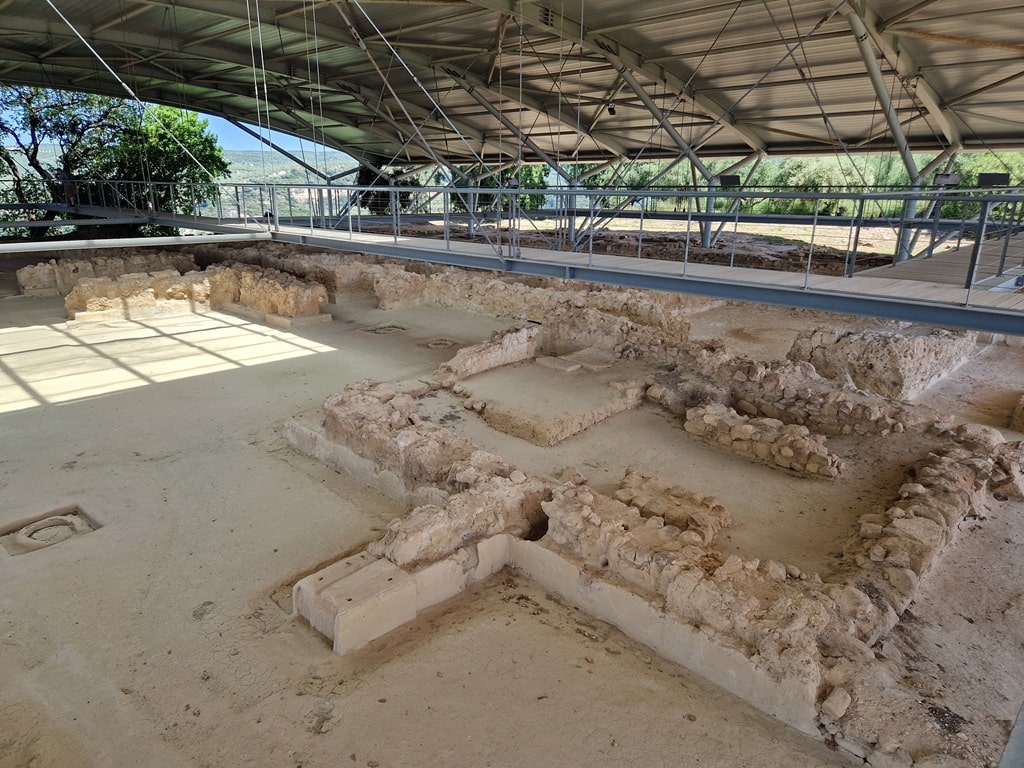
Disclaimer: This post contains affiliate links. This means that should you click on certain links, and then subsequently purchase a product, I will receive a small commission.
- Visiting the Palace of Nestor in Pylos
- How to get to the Palace of Nestor
- Myths and Legends of the Palace of Nestor
- A brief history of Nestor’s Palace of Pylos
- A description of the palace of Nestor
- What you will see when you visit the Palace of Nestor
- Complete the experience by visiting the Archaeological Museum of Chora
- Ticket prices and other info
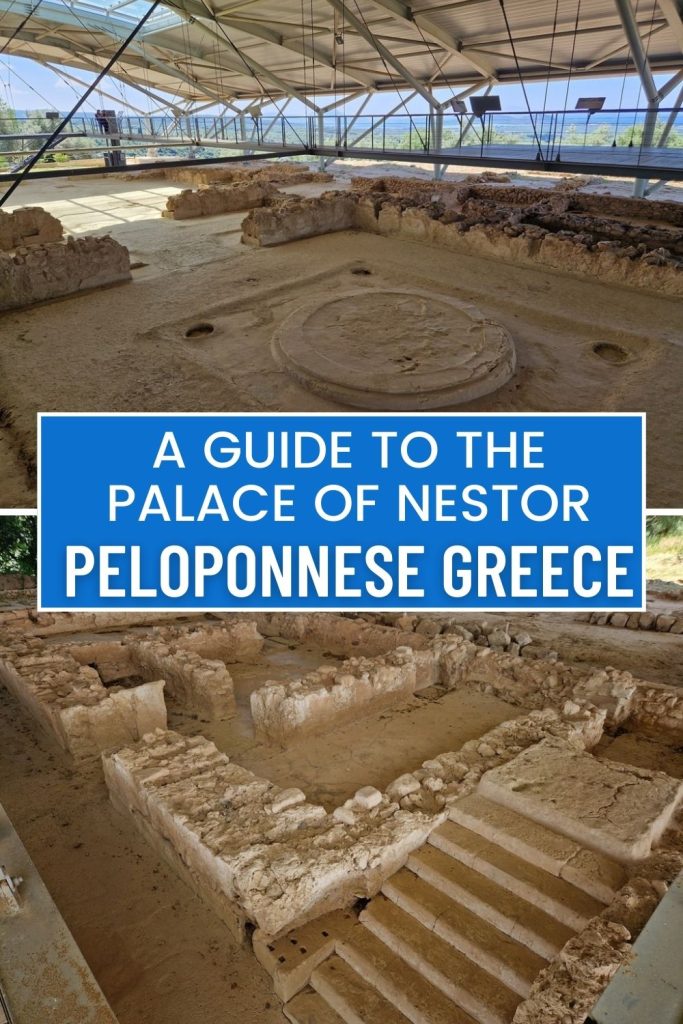
Visiting the Palace of Nestor in Pylos
How to get to the Palace of Nestor
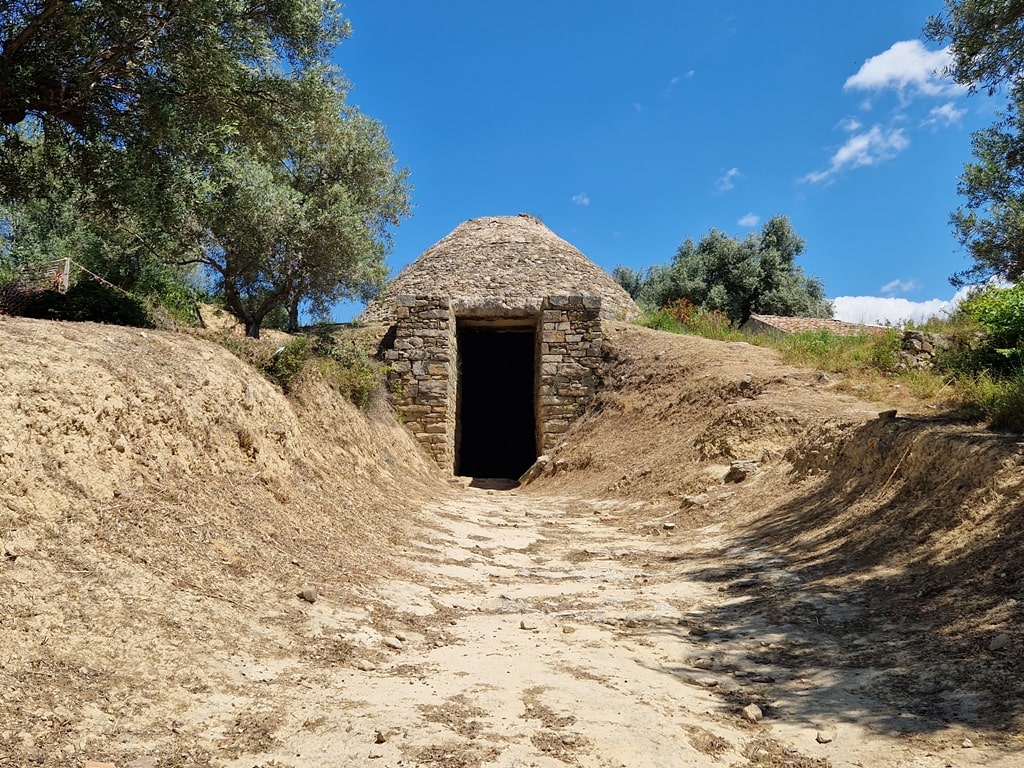
The Palace of Nestor is in the Peloponnese. It is 14 km north of the town of Pylos and 58 km from the city of Kalamata.
You can go there by bus, taxi, or car. If you are starting off from Kalamata, you need to first take the Kalamata-Pylos route of Messinia KTEL. Then once you’re at Pylos, change for the Pylos – Nestor’s Palace route of the Messinia KTEL.
If you’re starting off from Kalamata, the trip will take roughly two hours, depending on the wait when you change buses. If you’re starting off from Pylos, the trip takes less than an hour! Tickets will set you back anything from 5 to 20 euros, depending on your route and other parameters. You don’t need to book your seat in advance, just buy your ticket at the KTEL station!
The route by car from Kalamata lasts 1 ½ hours and it’s a very scenic route. If you have your own rented car, you have a lot more freedom and the overall trip will be the cheapest for you. In general, if you have chosen the Peloponnese for your unforgettable Greek vacation, it’s a great idea to rent a car to explore it exactly when and how you want.
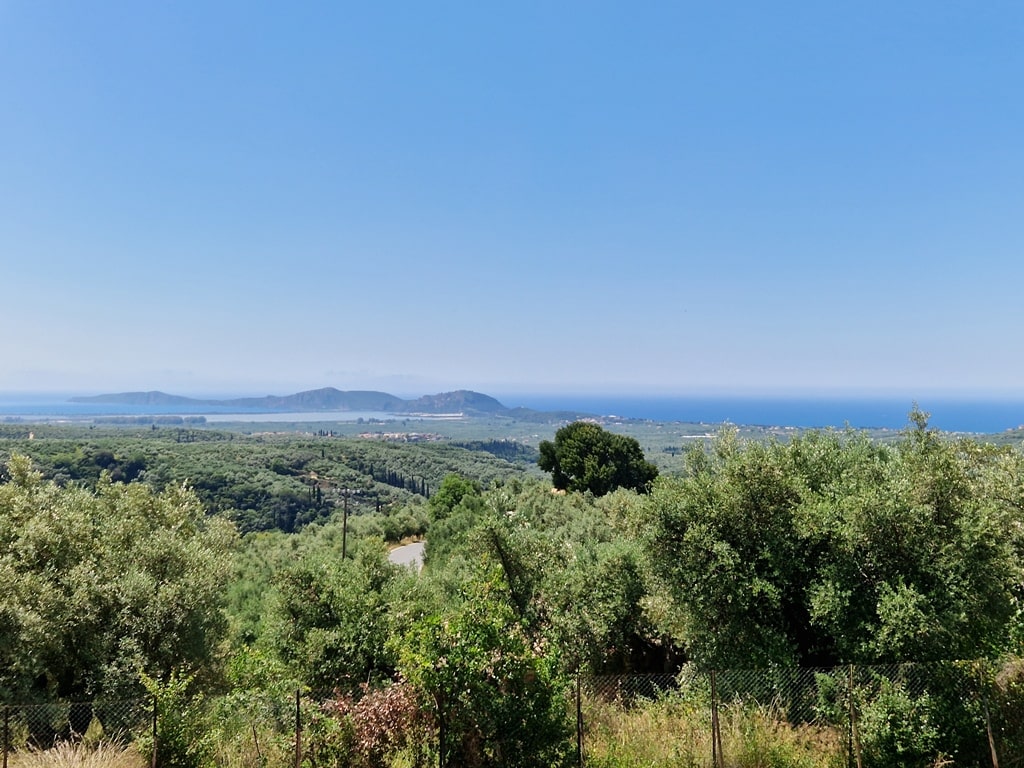
You can also book a taxi to take you to the Palace of Nestor. If you book from Kalamata, expect the fare to be around 90 to 100 euro, but that fare will also include a taxi waiting of two hours or so (depending on your agreement) and the ride back to Kalamata. It’s best to always book taxis in advance so that you have already agreed on the fare and the services provided.
The best way to explore the area around the Palace of Nestor is by having your own car. I recommend booking a car through Discover Cars where you can compare all rental car agencies’ prices, and you can cancel or modify your booking for free. They also guarantee the best price. Click here for more information and to check the latest prices.
Myths and Legends of the Palace of Nestor
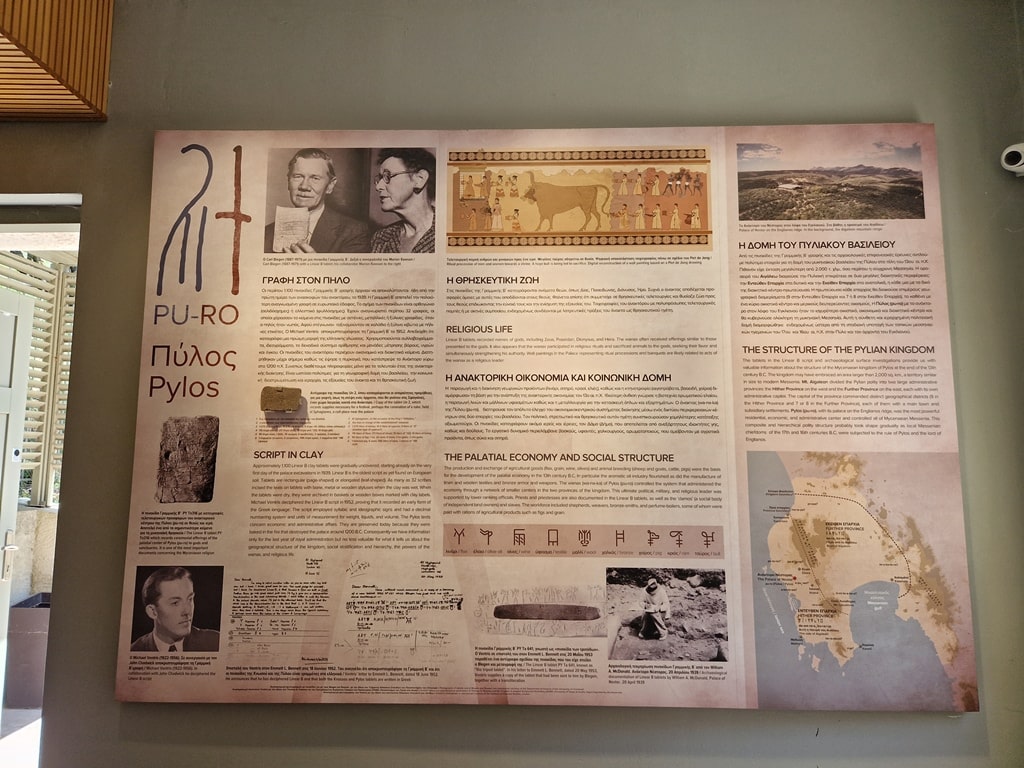
According to ancient Greek mythology, Nestor was the son of Nileas and Chloris. Nileas was one of Poseidon’s sons and the founder of the city-state of Pylos. According to the legends, Nileas died when he refused to absolve Heracles (Hercules) of a murder he had committed. Since then, the descendants of Nileas were always at odds with the descendants of Heracles.
However, Nestor became the most famous and respected king of Pylos. Of Nileas’ 11 children, he was the sole survivor since he hadn’t been at Pylos when Heracles attacked. This is how he inherited the birthright to become the city state’s king.
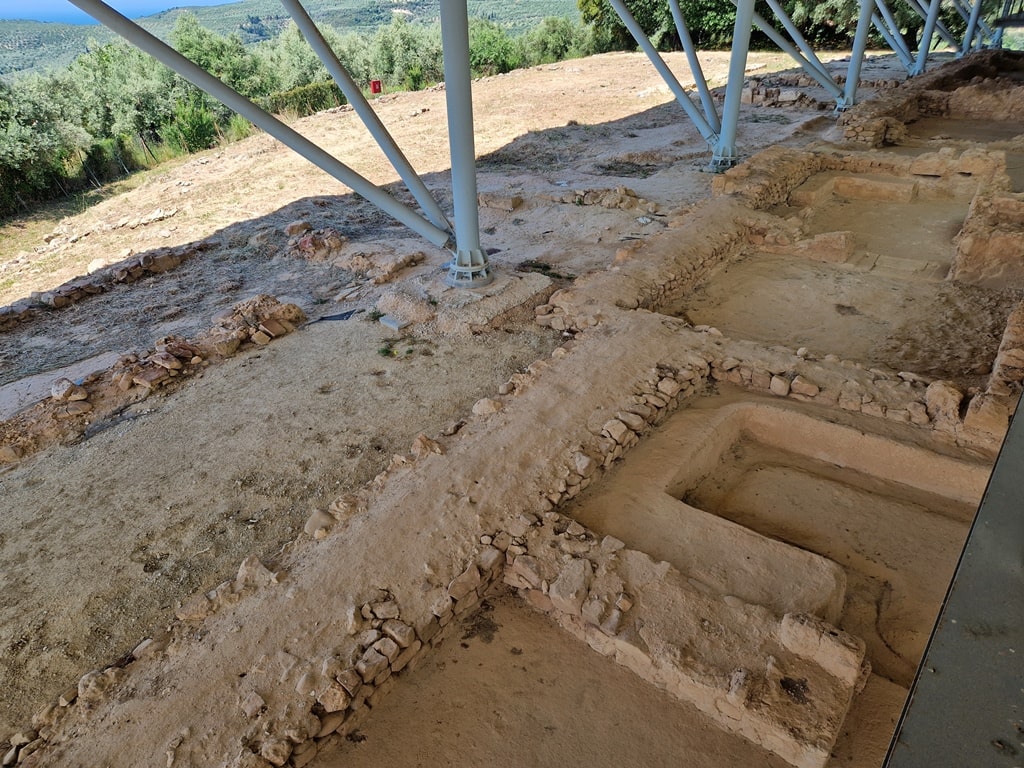
Nestor took part in many of the most well-known adventures and wars of ancient Greek mythology: he is said to have fought against the Centaurs, sailed with the Argonauts, and taken part in the hunting of the Caledonian Boar.
By the time he joined the Trojan War on the side of the Achaeans, he is portrayed as a wise and older man. In every scene he is in, Homer shows him to be a calm, practical, strategical, and clever advisor to the Achaeans. His words always carry weight and impact decision-making.
Nestor sailed to the Trojan War with 90 ships and at least two of his sons, Antilohos and Thrasymedes. Antilohos died in battle and his brother avenged him in an even bloodier one over his body.
It is also said that Thrasymedes was in the Trojan Horse that was carried in Troy and led to its sacking. He is the son who returned to Pylos and carried on Nestor’s bloodline.
A brief history of Nestor’s Palace of Pylos
Though Heinrich Schliemann suspected that Nestor’s palace was somewhere around Pylos and tried to find it in the late 1800s, he was unsuccessful. It was in 1939 that the palace was first discovered by Konstantinos Kourouniotis and Carl Bergen.
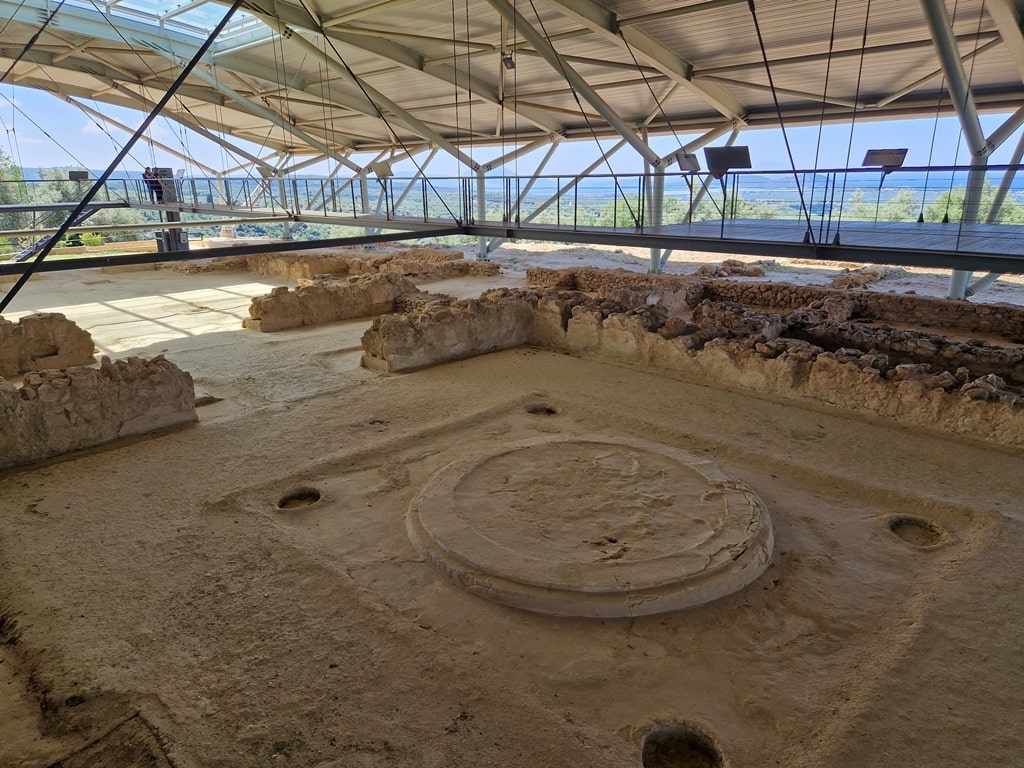
Systematic excavations began after WWII, in the early 50s, and continue up to today. The entire palace of Nestor has been uncovered, but there is still a lot to learn and to discover, so excavations have never stopped. This is wonderful since in 2015 the opulent Tomb of the Griffin Warrior was found, with precious artifacts, armor, jewelry, and skeletal remains.
The palace itself was built in the 13th century BC and its founding is credited to Nestor himself. There is evidence that the palace was inhabited continuously through the Mycenean Age, though it was destroyed sometime in the 12th century BC.
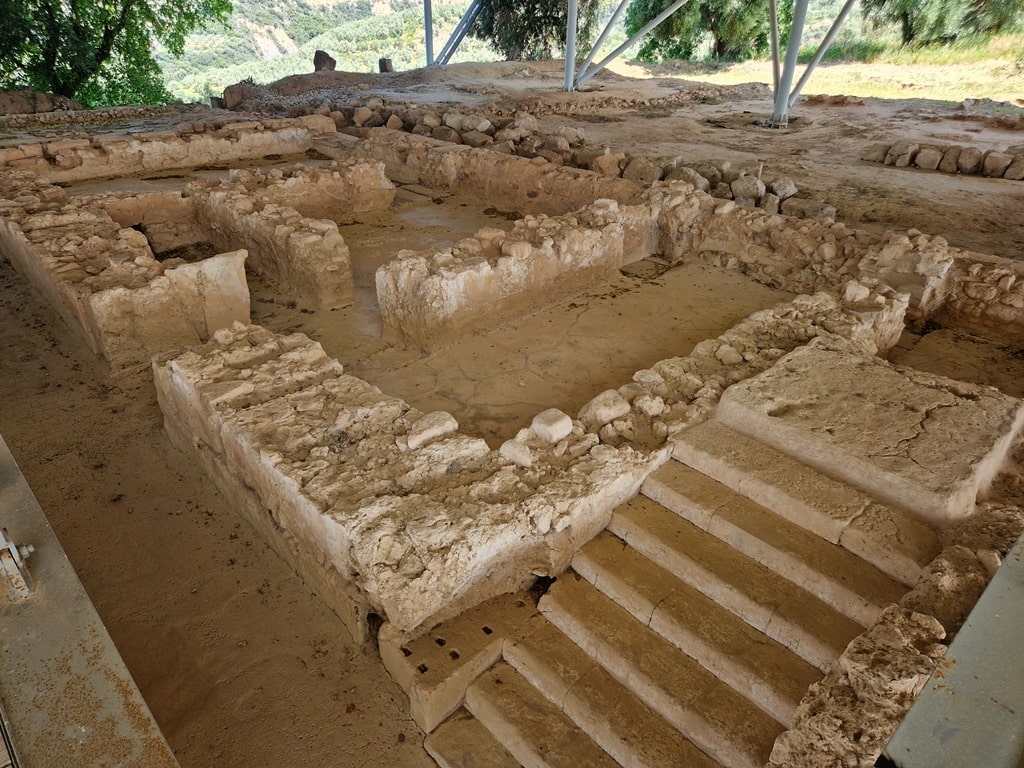
It is considered one of the grand palaces of the Greek Bronze Age, before the era of the ancient Dark Ages that brought about the end of the Mycenean civilization together with several others around the Mediterranean.
The palace has only recently been reopened for the public, so don’t miss out on this unique opportunity to gaze upon the way of life of Bronze Age ancient Greeks!
A description of the palace of Nestor
The palace has two floors throughout the complex and four main buildings. It is calculated that the palace had around 105 rooms. The central building served as the royal residence. The other buildings seem to be older residences and administrative buildings, including a commerce and justice center.
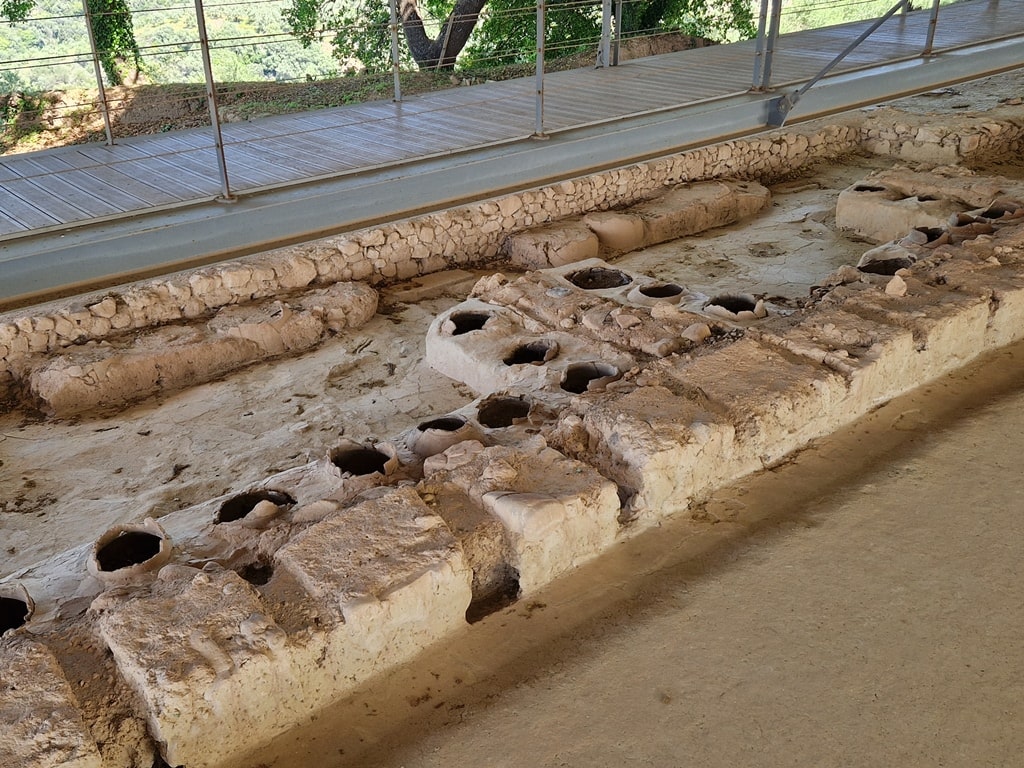
Each building had special rooms for the storage of wine and other foods. There were also several workshops and craftsman areas for the construction of armor and chariots. There are also several smaller rooms and structures that served as auxiliary rooms and residences for servants, slaves, and other royal staff.
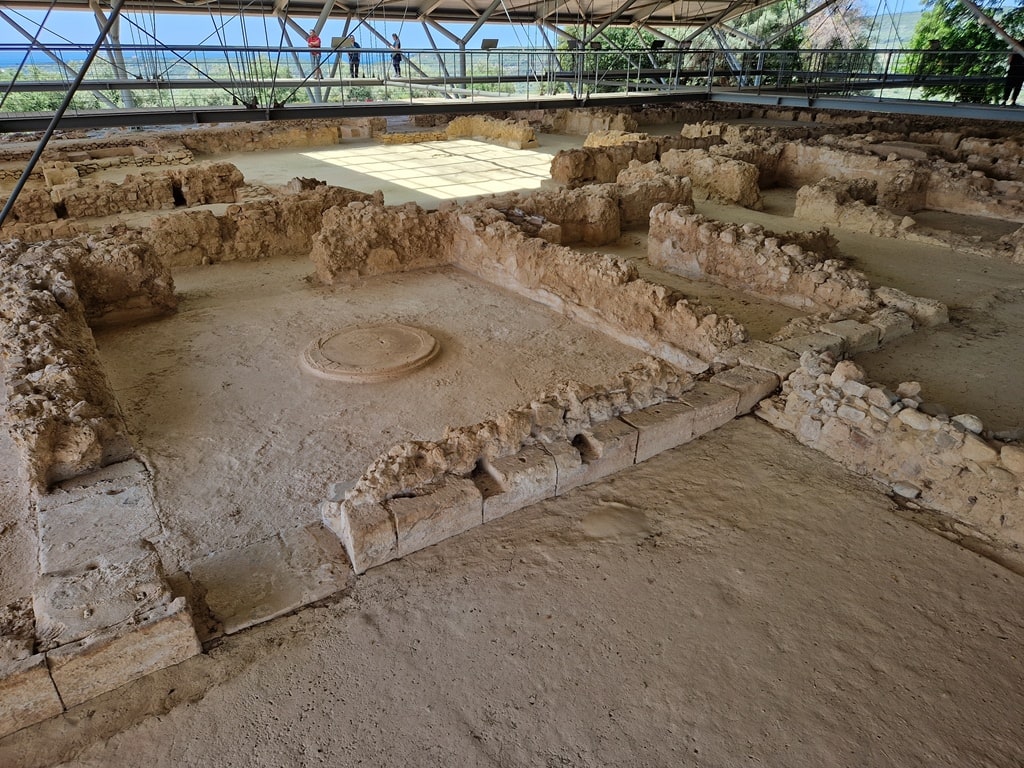
The palace was built mostly out of wood, with foundations of stone. It was a remarkably sturdy structure but unfortunately susceptible to fires. This must have been the way it was destroyed during the Dorian invasion.
What you will see when you visit the Palace of Nestor
The palace is situated atop a hill, Ano Englianos, with sweeping, gorgeous views of the bay and the surrounding verdant areas, including the gorgeous Voidokilia beach. Make sure you take a moment to enjoy the landscape as you immerse yourself in history.
As you enter the palace, you will come upon the main gate and the position of the guard that was guarding it. You will also see a few small rooms as you go in, probably sheltering the tax collectors and other administrative services.
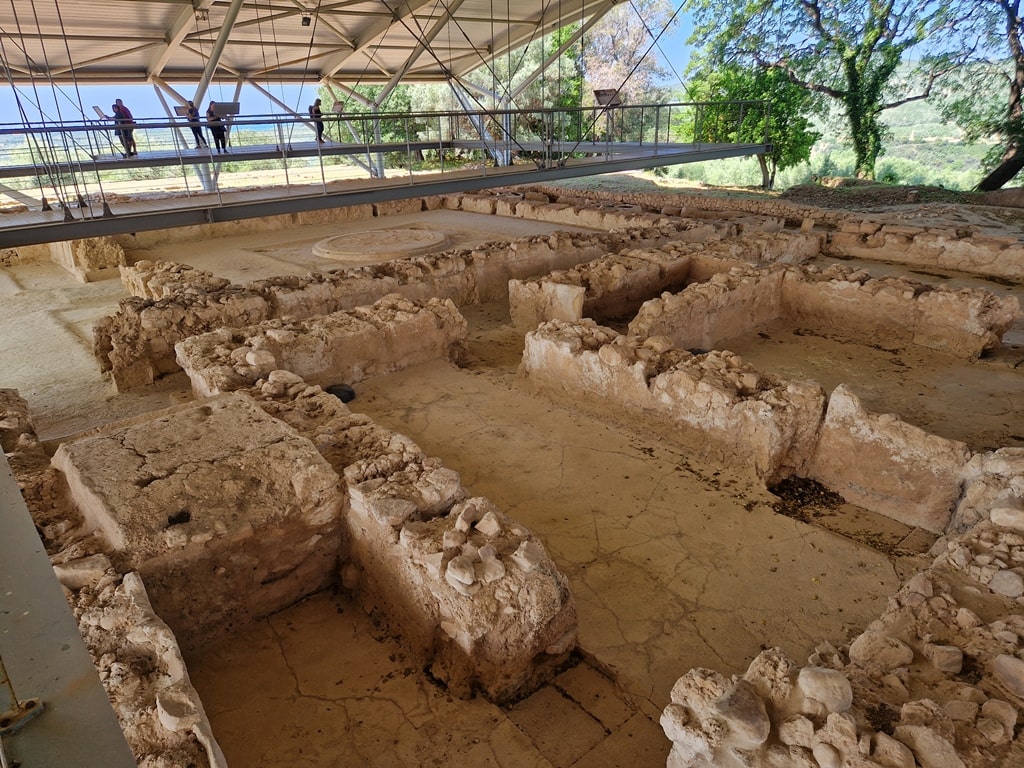
It’s in these rooms that several hundred clay tablets were found, inscribed in Linear B which is an early form of Greek script. Linear B has been decoded, so we know that these tablets were accounting documents, censuses, and other documents of administration.
You will then come upon the central building with the main room, the Throne Room. It has its characteristic wide, round hearth. In its heyday, it would have been framed by wooden pillars, painted and ornate, and a wooden roof with ventilation for the fire’s smoke. All the walls were frescoed with vibrant colors, depicting scenes of griffins, nature, and scenes of celebration.
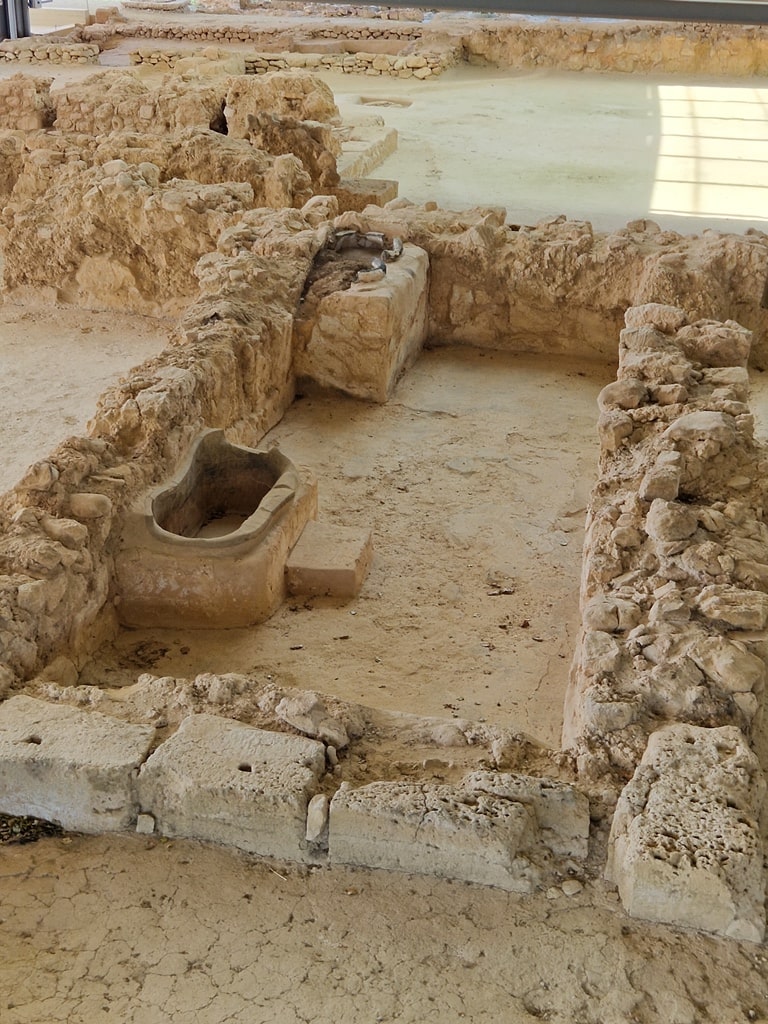
You will walk through specially installed passageways to look upon the excavated floors and walls with traces of their grandeur. Make sure you look at the famous bathtub with the ornate decorations, where legend has it that Nestor’s youngest daughter bathed the hero Telemachus, the son of Odysseus.
Complete the experience by visiting the Archaeological Museum of Chora
Once you have explored the Palace of Nestor, it’s worth it to make a small detour to the little town of Chora, very near the archaeological site, to visit its Archaeological Museum. Though relatively small, it holds all the precious finds from the Palace of Nestor, including pottery, tablets, tools, jewelry, perfume bottles, and gorgeous wall frescoes.
Alongside the finds from the palace, you will also see unique displays of artifacts from the surrounding excavated areas of Pylos and Trifilia. Finds from opulent tombs, such as amazing golden jewelry and other precious items are exhibited in the museum, so make sure you visit to get an intimate look at the daily lives of the court of Nestor’s palace.
Ticket prices and other info
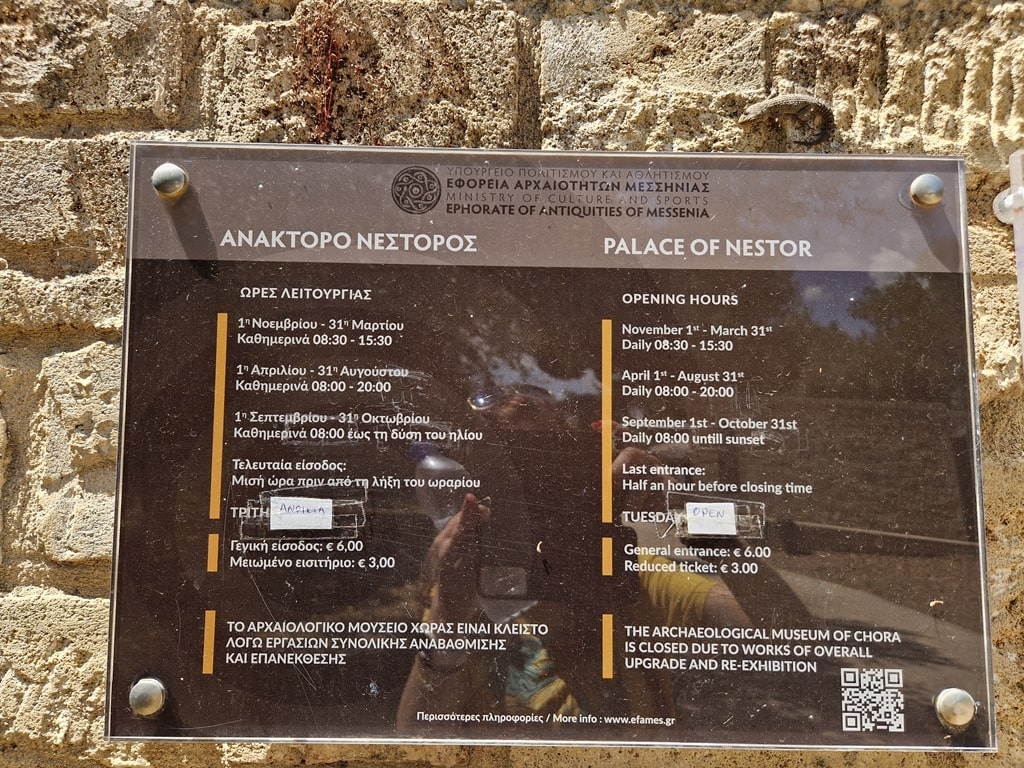
The full-price ticket for Nestor’s Palace is 6 euro during the high season. For the Archaeological Museum of Chora, the full ticket is 3 euro.
You can purchase a single 3-day ticket for 15 euro to get entry to the Palace of Nestor, the Archaeological Museum of Messenia, the Museum of Mourtzinos in Kardamyli, the Archaeological Museum of Chora, as well as the Castles of Methoni, Pylos, and Kalamata for a full historical experience!

You can enter every archaeological site and museum in Greece for free on specific days. You may also be entitled to a reduced ticket price, so make sure you have with you the proper paperwork to prove it. Check in advance whether you qualify on the webpage of the Greek Ministry of Culture.

